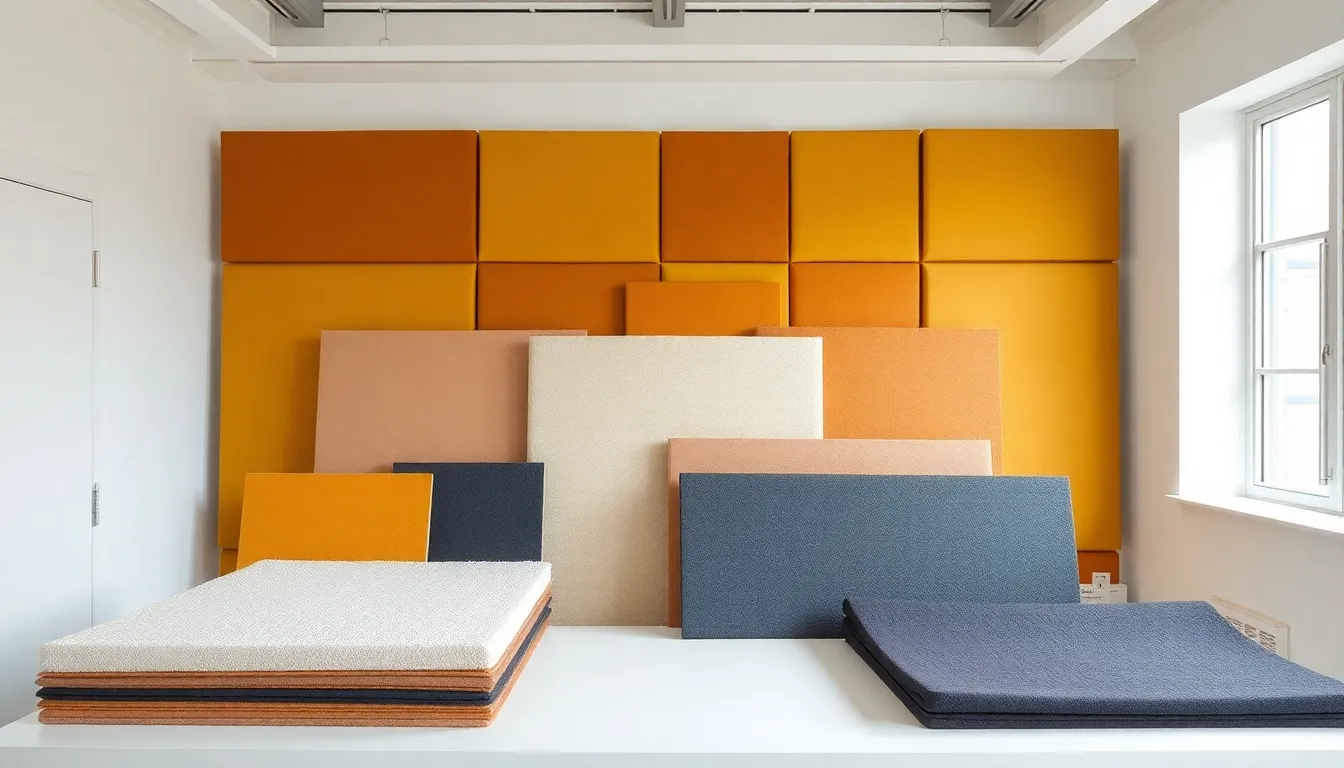Table of Contents
ToggleImagine living in a world where the neighbor’s karaoke nights don’t feel like an audition for a reality show. Soundproofing transforms that dream into reality, creating a serene oasis in the chaos of everyday life. Whether it’s a home office, a cozy bedroom, or a music studio, the right soundproofing solutions can make all the difference.
Understanding Soundproofing
Soundproofing involves techniques and materials that minimize sound transmission between spaces. It enhances privacy and comfort in a variety of environments.
What Is Soundproofing?
Soundproofing refers to the process of reducing sound energy that travels from one area to another. Techniques such as adding insulation, using sound-absorbing panels, and sealing gaps in walls play a critical role. Common materials include acoustic foam, mass-loaded vinyl, and specialized drywall. These elements work together to create a barrier against noise, making spaces quieter and more enjoyable.
Importance of Soundproofing
Soundproofing significantly enhances quality of life by minimizing unwanted noise. It proves especially beneficial in home offices, where concentration is vital, and in bedrooms, promoting better sleep. Music studios also rely on soundproofing to prevent sound leakage, ensuring high-quality recordings. Additionally, effective soundproofing boosts property value, creating an appealing environment for potential buyers.
Types of Soundproofing Materials

Various materials contribute to effective soundproofing, each serving unique purposes in noise reduction. Choosing the right materials ensures optimal performance in different settings.
Insulation Materials
Insulation types play a crucial role in soundproofing. Fiberglass insulation significantly reduces sound transfer due to its dense structure. Mineral wool also offers excellent sound absorption; it works well in both walls and ceilings. Foam board insulation provides rigidity and effective sound barriers, particularly in exterior walls. These materials not only enhance soundproofing but also improve energy efficiency, adding additional benefits for homeowners.
Soundproofing Panels
Soundproofing panels effectively absorb sound waves and reduce echo. Acoustic foam panels, available in various shapes and sizes, soften intense noise levels and improve room acoustics. Fabric-wrapped panels combine aesthetic appeal with soundproofing functionality, making them suitable for residential or commercial spaces. Some options include dense mass-loaded vinyl panels, which add mass to walls or ceilings, blocking sound transfer. By strategically placing these panels, individuals can create a quieter, more serene environment tailored to their needs.
Soundproofing Techniques
Soundproofing techniques encompass various methods to reduce noise effectively. These approaches allow for improved tranquility in different environments.
Acoustic Sealant
Acoustic sealant serves as a crucial component in soundproofing. It adheres well to surfaces, filling gaps around windows, doors, and wall joints. This material minimizes sound leakage, making it essential for any soundproofing project. When applied properly, it creates an airtight barrier that enhances the effectiveness of other soundproofing materials. Sealant remains flexible after drying, allowing movement without compromising the seal. For optimal results, experts recommend using it alongside insulation materials like fiberglass or mineral wool.
Soundproof Curtains
Soundproof curtains provide a stylish solution for noise reduction. These specialized drapes feature dense fabric, which absorbs sound waves, reducing noise from outside. Hanging them across windows not only enhances aesthetics but also improves comfort. Effectiveness can vary based on fabric thickness and layering techniques. For maximum benefits, layered curtain systems with an additional sheer layer can offer further insulation against sound. They’re especially useful in urban environments, making homes more peaceful while maintaining natural light.
Common Applications of Soundproofing
Soundproofing significantly enhances various environments, creating comfort and tranquility. Both residential and commercial spaces benefit from targeted soundproofing techniques.
Residential Spaces
In residential settings, soundproofing addresses noise from neighbors, street traffic, and household activities. Bedrooms often utilize acoustic panels to absorb sound, ensuring restful sleep. Living rooms benefit from soundproof curtains that block external noise, enhancing relaxation. Home offices require sound insulation to minimize distractions, promoting productivity. Creating quiet zones in multifamily dwellings can reduce conflicts among residents and increase overall satisfaction.
Commercial Spaces
Commercial spaces such as offices, restaurants, and conference rooms rely on soundproofing to improve acoustics and privacy. Cubicles often use sound-absorbing materials to lower ambient noise, enhancing focus among employees. Meeting rooms benefit from specialized drywall that prevents sound leakage, creating a more professional environment. In restaurants, noise-reducing solutions enhance guest experience by minimizing background chatter, promoting conversation. Effective soundproofing strategies in retail spaces can also improve customer satisfaction by ensuring a more serene shopping atmosphere.
Challenges in Soundproofing
Soundproofing presents several challenges, including cost considerations and installation issues that can impact effectiveness.
Cost Considerations
Costs for soundproofing can vary significantly. Materials such as acoustic panels, insulation, and soundproof drywall carry different price tags. Budgeting for high-quality materials is essential, as cheaper options often lead to inadequate performance. Homeowners or businesses might spend between $1,000 to $3,000 on comprehensive soundproofing solutions. Additionally, professional installation increases overall expenses. Thoroughly evaluating costs against desired outcomes helps ensure adequate investment in soundproofing efforts.
Installation Issues
Installation frequently poses challenges in achieving optimal soundproofing. Identifying the right materials for specific spaces can complicate the process. Air gaps in walls and ceilings might require additional sealing methods to prevent sound leaks. Professional installation sometimes becomes necessary for complex projects, posing a logistical challenge. Adequate surface preparation, proper placement of materials, and adherence to manufacturer specifications all play crucial roles. Tackling installation issues early ensures that soundproofing measures function as intended, thus maximizing effectiveness.
Soundproofing offers a practical solution for enhancing comfort and tranquility in various environments. By effectively minimizing noise transmission individuals can create peaceful spaces that promote concentration and relaxation. The right materials and techniques not only improve the quality of life but also add value to properties.
Investing in soundproofing is a smart choice for homeowners and businesses alike. With options ranging from acoustic panels to soundproof curtains there’s a solution tailored to fit any need. Prioritizing soundproofing can lead to a more enjoyable and productive atmosphere whether at home or in a commercial setting.




